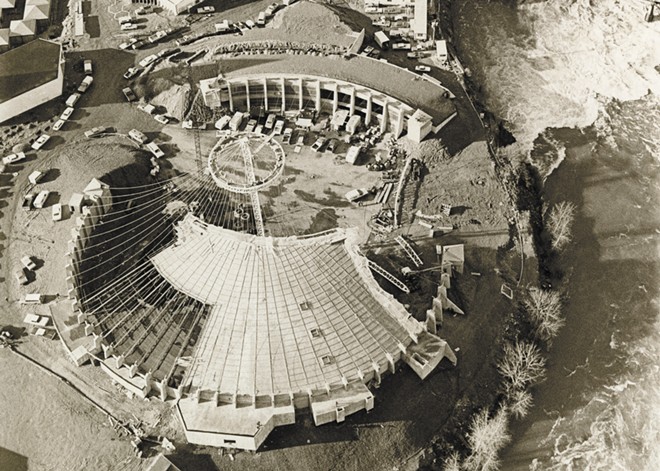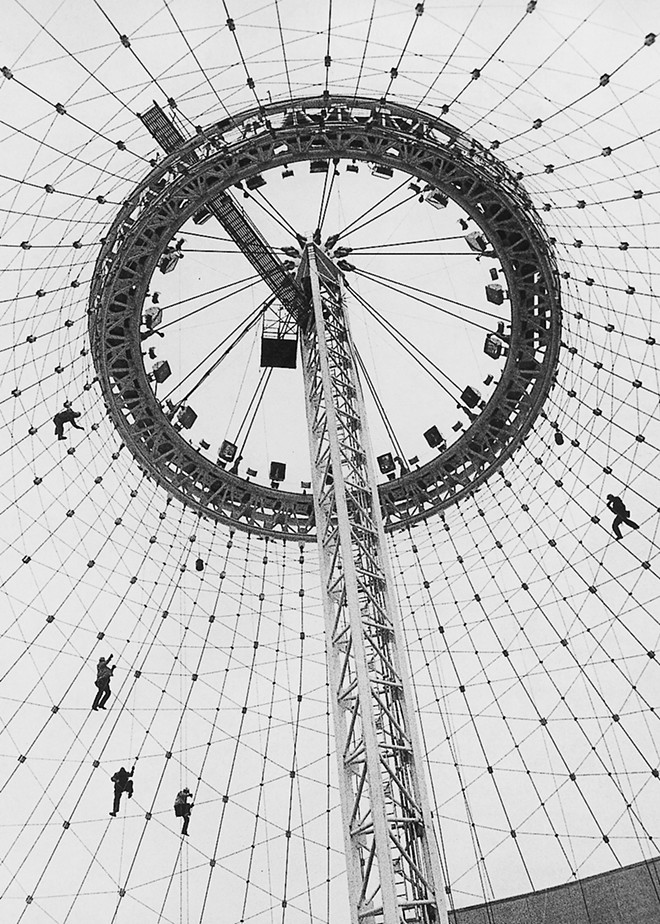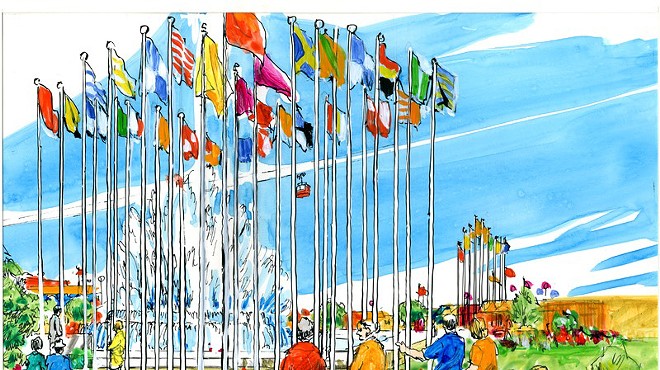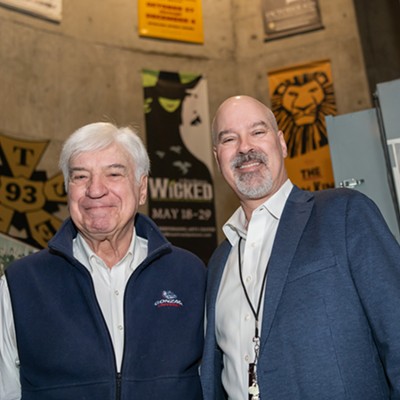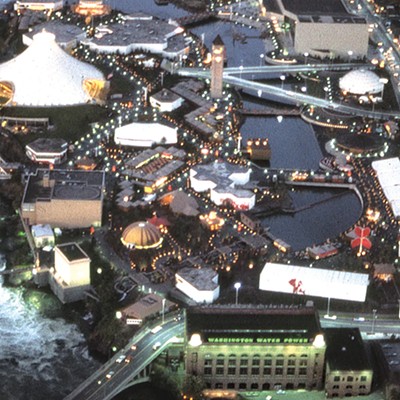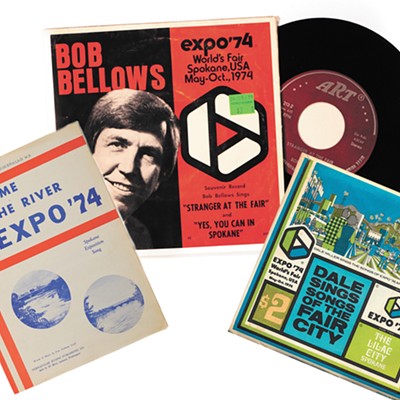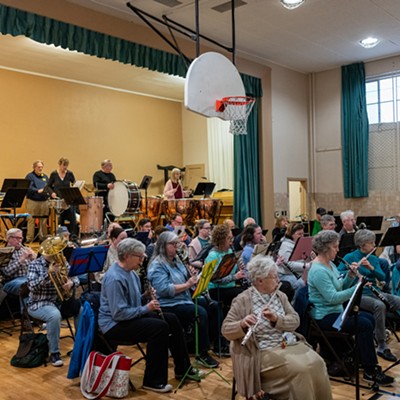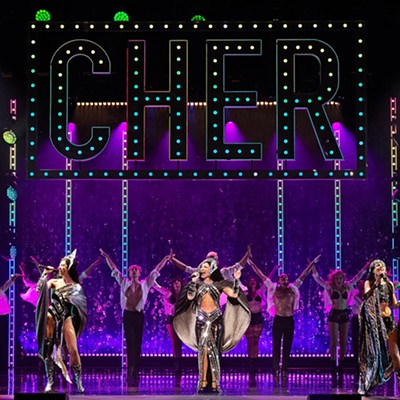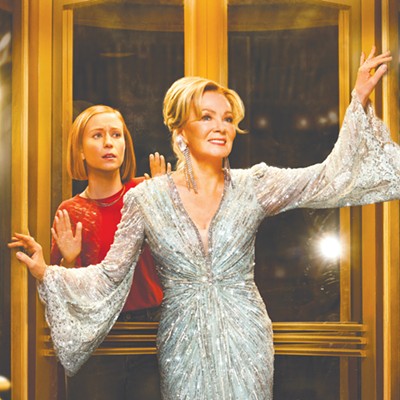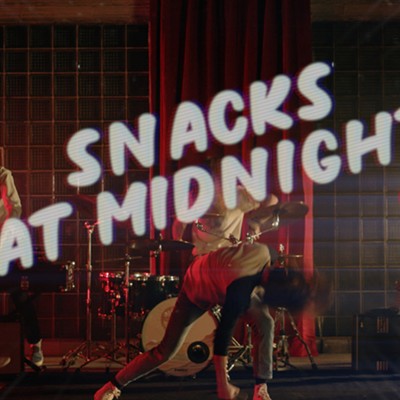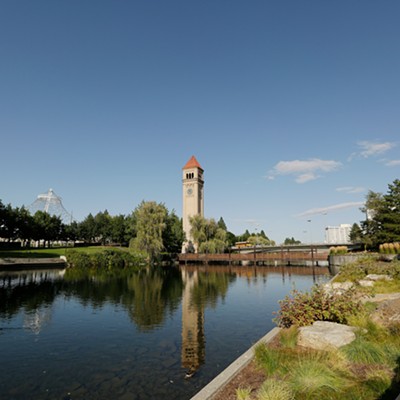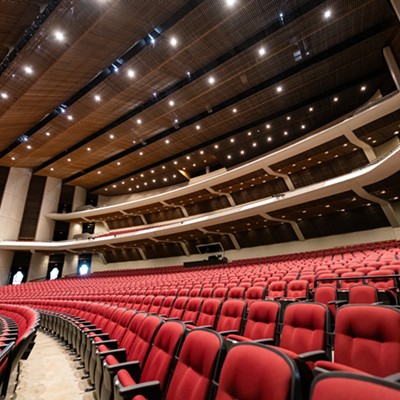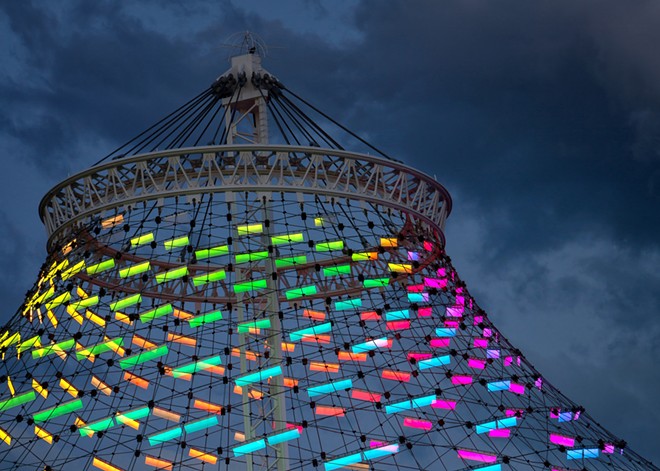
During the world's fair, the U.S. PAVILION delivered a plea for the environment. With the Spokane River flowing on either side, the displays challenged civic complacency by showing how much people consumed — and the resulting mountains of waste. This kind of messaging is commonplace today, but this was the early stages of the environmental movement, with Earth Day only having been established in 1970. Behind a massive wall you could watch the IMAX film Man Belongs to the Earth with its message of treading lightly on the planet.
After Expo, a variety of new initiatives kept the party going. A new IMAX theater was built just west of the Pavilion; an ice skating rink was added; and a Disney-level attraction called "The Spokane Story" drew tourists and locals alike. But it got more difficult; after a few winters, the Pavilion's canvas covering started to fail and had to be removed.
By 2013, Riverfront Park — and the Pavilion — seemed to be backsliding. So newly elected Mayor David Condon kicked off plans to ask citizens to fund a major, parkwide renovation. Voters green-lighted $64 million, which paid for, among other improvements, a new Skate Ribbon, a proper home for the Looff Carrousel and an innovative makeover for the U.S. Pavilion. Today the Pavilion functions as a unique greenspace for all to enjoy, but it can also be activated for events, like Hoopfest Center Court and big-name concerts. ♦
